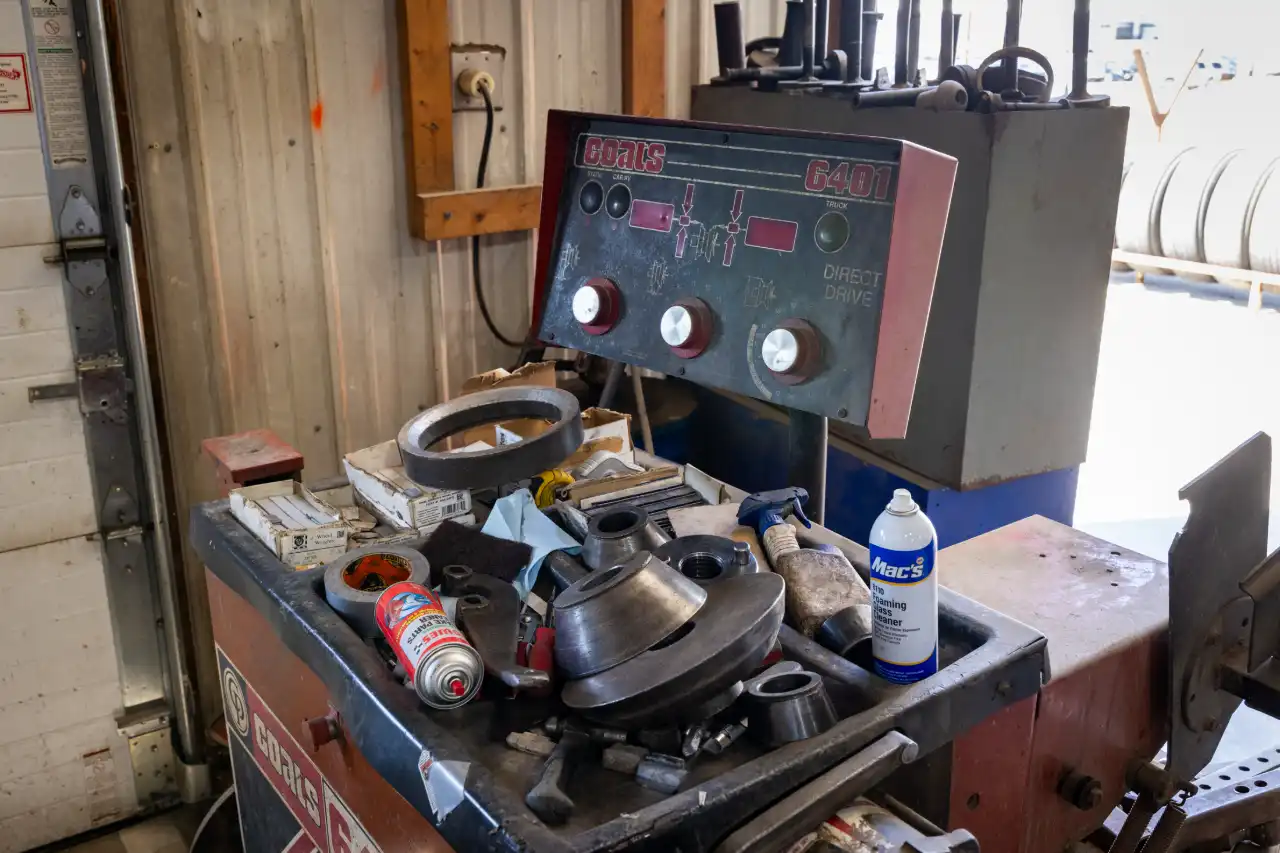Alignment Mistakes That Shorten Tire Life and Hurt Your Bottom Line

Tires are one of the highest recurring costs in fleet maintenance. But here’s the kicker—most premature tire wear isn’t due to poor tire quality or rough roads. It’s caused by improper wheel alignment.
When your rig’s alignment is out of spec, your tires work harder, wear faster, and your operating costs skyrocket. That’s why we’ve asked our team about the most common alignment mistakes and how they hit your bottom line.
Ignoring Regular Alignment Checks
Some fleet managers wait until there's visible tire damage to get an alignment. That’s a budget-busting mistake. Just a slight toe misalignment—off by even 1/8 of an inch—can scrub thousands of miles off a tire’s lifespan.
Why it matters:
- Increases rolling resistance.
- Causes uneven tread wear (especially heel/toe wear).
- Shortens tire life by 15–30%.
Solution: Set a regular alignment schedule—at least every 50,000 miles or quarterly for high-mileage trucks.
Rushing Through Suspension Inspections
Alignments don’t live in a vacuum. They’re directly affected by suspension health. Worn kingpins, bushings, or tie rods can throw off alignment angles the moment a truck hits the road.
Mistake: Performing alignments without checking or replacing worn suspension parts.
Fix it: Always do a pre-alignment inspection. If components are loose or worn, you’re just aligning to a failing system. It’s a temporary fix that leads to long-term costs.
Misadjusting Caster and Camber Angles
The toe gets the spotlight, but camber and caster angles are just as important. Misadjusted camber leads to edge wear, while incorrect caster can cause steering instability and increase driver fatigue.
Typical issues:
- Positive camber = outside tire wear.
- Negative camber = inside wear.
- Caster imbalance = truck pulls to one side.
Tip: Use laser-guided or digital alignment tools for precision. Remember, potholes love to throw caster and camber out of whack.
Skipping the Rear Axle Alignment
Many fleets focus only on front-end alignment. But rear axles that are even slightly out of alignment can “dog track” the entire truck, forcing the front to compensate and shredding tires in the process.
Symptoms:
- Sidewall scuffing.
- Irregular trailer tire wear.
- Driver reports the truck pulling or crabbing.
Solution: Include rear axles in every professional alignment service. Trucks must track straight to maximize tire life and fuel economy.
Not Accounting for Load Weight and Distribution
Alignment done with an empty trailer doesn’t reflect real-world conditions. A misaligned axle may seem perfect in the bay, but once that truck’s hauling 80,000 lbs across Illinois, it tells a different story.
Pro insight: Perform alignment under typical load conditions or simulate weight using ballasts. It makes a big difference in maintaining even tire wear.
Forgetting Trailer Alignment
Trailer misalignment affects steer and drive tires more than you’d think. If a trailer is out of spec, it drags against the drive axle, wearing it unevenly and reducing control.
Check for:
- Feathered wear on trailer tires.
- Resistance when cornering.
- Driver complaints of unstable tracking.
CTA: Schedule trailer alignments at the same interval as tractors. It’s not optional—it’s essential.
Neglecting Documentation and Follow-Up
Alignments without documentation are like repairs without receipts—worthless in the long run. Without historical alignment data, you’ll miss patterns and waste time repeating old mistakes.
What to track:
- Before-and-after alignment specs.
- Tire wear trends by axle and position.
- Component replacements are tied to alignment shifts.
Bonus: Use this data to preemptively schedule alignments based on patterns, not problems.
Final Thoughts
Proper alignment isn’t just about smoother driving—it’s about protecting your tire investment, maximizing uptime, and preserving your profit margins. By avoiding these common alignment mistakes, you’ll keep your fleet safer, more efficient, and far more affordable in the long haul.
Similar posts
.webp)
Is Fleet Management Software Worth It?
Is fleet management software worth it? This guide breaks down how digital platforms improve preventive maintenance, fuel efficiency, compliance, safety, and real-time tracking—while highlighting costs and choosing the right system. Learn why Chicago fleets benefit most.
.webp)
Key Emissions Regulations You Need to Be Aware of in 2026
Tougher emissions rules hit in 2026. New federal GHG and NOx limits plus Illinois’ ACT rule mean diesel fleets must prep now. Expect stricter testing, limited diesel options, and more ZEVs. Stay compliant with PM, ECM updates, and fleet audits.
